Explore Paris: Culture, Cuisine, and Hidden Gems


Intro
Paris is a city that captivates the hearts and minds of those who visit. It is known for its rich history, stunning architecture, and vibrant culture. To truly experience the essence of this remarkable place, one must delve beyond the typical tourist attractions. An in-depth guide to Paris invites travelers to explore both iconic landmarks and lesser-known spots, offering a fuller understanding of what makes this city truly unique.
In this guide, we will discuss a range of topics important for navigating Paris effectively. From the must-see sites like the Eiffel Tower and the Louvre, to hidden gems tucked away in charming neighborhoods, this guide has all the details a curious traveler might need.
Additionally, we will cover practical tips for transportation and cultural etiquette, helpful for both first-time visitors and seasoned travelers. Through this journey in the heart of France, one will gain insights into local customs, culinary delights, and the art scene that define Parisian life.
By emphasizing these aspects, this guide aims to enrich your visit, making it memorable and fulfilling.
Next, we will explore the key trends that influence the Parisian atmosphere.
Prelude to Paris
Exploring Paris is vital for anyone seeking to immerse themselves in its rich culture and history. As the capital of France, Paris stands not only as a city but as a symbol of art, fashion, and cuisine. The introduction to this grand city provides context for understanding the layers of its identity, making it a cornerstone of the travel experience.
In this section, we will uncover what makes Paris such a unique and compelling destination. From its reputation as the "City of Light" to its historical significance, readers can gain insights that enhance the overall experience of visiting.
Paris: A City of Light
Paris is often referred to as the "City of Light". This nickname originates not from its illuminated streets, but from its historical role as a center of education and ideas during the Age of Enlightenment. The city attracted philosophers and thinkers who pushed the boundaries of knowledge and culture. Today, that spirit remains alive in its vibrant neighborhoods and intellectual spaces.
As visitors traverse the streets, they encounter the profound influence the city has had on the world. Paris is a hotspot for creativity and innovation. Modern artists, writers, and designers continue to find inspiration within its historic walls. The broad avenues, cozy cafés, and art-filled galleries contribute to a cultural atmosphere that is unparalleled.
Historical Significance and Influence
The history of Paris is marked by notable events that reshaped not only France but the world. The French Revolution, for instance, birthed significant changes in governance, influencing democratic ideals across many nations. Landmarks such as the Bastille and Place de la République serve as reminders of this transformative period.
Moreover, Paris has survived numerous challenges, from wars to revolutions, and each event has added depth to its narrative. The city emerged from the World Wars with an indomitable spirit, becoming a symbol of resilience. In addition, Paris has been a leader in shaping modern culture, from fashion trends originating in the Marais district to culinary advancements renowned throughout the globe.
Navigating the City
When visiting a city as expansive and intricate as Paris, the ability to navigate effectively becomes essential. Understanding how to move through the city's streets and metro systems can enhance your experience significantly. This section will highlight key transportation options, the efficiency of the public transport, and strategies to help you get around with ease.
Public Transportation Overview
Paris boasts one of the most developed public transportation networks in the world. The Métro, with its extensive underground system, provides quick access to major destinations across the city. Trains run frequently, making it a reliable option for travelers. Additionally, the city is served by trams and buses, which provide alternative routes and scenic views. The RER trains also connect Paris to its suburbs, useful for day trips to nearby areas such as Versaille.
Key points about public transport in Paris:
- Métro System: Consists of 16 lines, known for their speed and coverage.
- RER Trains: Connects central Paris to surrounding suburbs, ideal for traveling outside the main city.
- Buses and Trams: Complement the metro, providing a broader range of travel options.
Iconic Landmarks
Iconic landmarks serve as symbols of a city’s identity and culture. In Paris, these sites are woven into the fabric of its history, reflecting both artistic achievement and social evolution. Visiting these landmarks is not just about seeing famous sights, but about understanding the narratives behind them.
Paris boasts a myriad of architectural marvels and historical sites each telling its unique story. The experience of standing before these landmarks offers insight into the past and present of the French capital. Moreover, these sites often provide a backdrop for local life, hinting at how Parisians live, work, and interact with their environment. Therefore, exploring these landmarks enriches a visitor�’s perspective beyond mere aesthetics.
The Eiffel Tower
The Eiffel Tower is perhaps the most recognized structure in Paris. Constructed in 1889 by Gustave Eiffel for the Exposition Universelle, it towers at about 324 meters. Its significance transcends its role as a tourist attraction; it exemplifies France's artistic innovation during the Industrial Revolution.
Visitors can choose to ascend the Eiffel Tower for a breathtaking view that encompasses all of Paris. The experience does tend to get crowded, particularly during peak tourist months. It is advisable to book tickets in advance to avoid long lines and potential disappointment.
Not only does the Eiffel Tower offer stunning panoramic views but it also hosts a range of fine dining options. The 58 Tour Eiffel restaurant, located on the first level, serves classic French cuisine amidst a beautiful view. This landmark serves as a meeting point for locals and tourists, contributing to its importance in the cultural landscape of the city.
Louvre Museum
The Louvre Museum, originally built as a fortress in the late 12th century, transitioned into a public museum during the French Revolution. Today, it is home to thousands of works of art, including the Mona Lisa and the Venus de Milo. The sheer scale and diversity of its collection make the Louvre a must-visit for art enthusiasts.
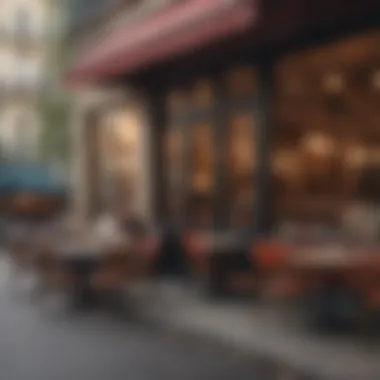
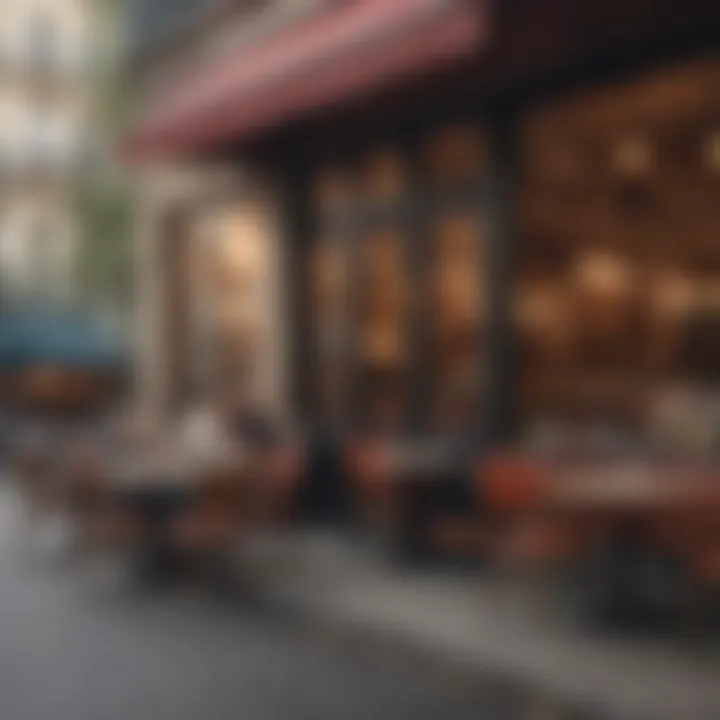
With over 35,000 artworks on display, one could easily spend an entire day exploring the vast halls. To enhance the experience, consider joining a guided tour that can provide context and background to the pieces on display. Additionally, the museum offers various exhibitions throughout the year, making repeat visits beneficial.
Notre-Dame Cathedral
Before the fire in 2019, Notre-Dame Cathedral was one of the highlights of Parisian architecture. Dating back to the 12th century, this Gothic masterpiece remains crucial in understanding medieval European art and architecture. The detailed sculptures and stained glass windows reveal significant religious and historical narratives.
While restoration work continues, the area around Notre-Dame is still a hub of activity. Visitors can explore Île de la Cité and take in the Seine’s ambiance. The cathedral’s resilience and ongoing restoration signify not only a landmark but also a cultural comeback story.
"Notre-Dame was more than a building; it symbolized the heart of Paris."
Sacré-Cœur Basilica
Sacré-Cœur Basilica, perched atop Montmartre, offers both spiritual solace and stunning views. Finished in 1914, its white dome stands as a striking contrast against the Parisian skyline. The basilica is dedicated to the Sacred Heart of Jesus and is an important pilgrimage site.
The interior is equally remarkable, featuring intricate mosaics and a peaceful atmosphere. Visitors are welcome to attend services or simply admire the artistic elements. Climbing the dome is recommended for panoramic views of the city, which are particularly breathtaking at sunset.
Exploring these iconic landmarks in Paris offers not only visual pleasure but also immersive experiences in history, artistry, and culture. These locations not only attract millions of visitors each year but they also reflect the city's enduring legacy as a center of enlightenment and creativity.
Culinary Experiences
Culinary experiences in Paris are not simply about food; they represent a deep connection to the culture and history of the city. Food is a vital component of Parisian life, intertwining with daily routines and celebrations. This section explores various aspects of the culinary landscape, showcasing how these experiences enrich a visitor’s understanding of Paris. Enjoying traditional dishes, spending time in local cafés, and appreciating wine and cheese pairings offer insights into the city's lifestyle. Thus, understanding cuisine contributes significantly to experiencing Paris in a comprehensive manner.
Traditional French Cuisine
Traditional French cuisine is renowned worldwide for its flavors and techniques. Each dish tells a story shaped by regional ingredients and historical influences. When in Paris, trying classic dishes is essential. Some must-try meals include
- Coq au Vin: A slow-cooked chicken dish in red wine.
- Boeuf Bourguignon: Tender beef braised in red wine, with carrots and onions.
- Ratatouille: A vegetable stew that is both nutritious and delicious.
Engaging with these dishes at local bistros allows travelers to appreciate not only the tastes but also the culinary tradition. In addition, many restaurants take pride in sourcing local ingredients, ensuring that the flavors are not only fresh but also reflective of seasons. This approach to cooking makes dining in Paris a truly unique experience.
Parisian Cafés and Bakeries
Paris is famous for its cafés and bakeries, which act as social hubs and culinary cornerstones. Visiting a café is more than just a moment to sip a drink; it's a cultural ritual. A typical Parisian café serves espressos, croissants, and simple dishes that embodies the essence of the city.
In bakeries, one can find exceptional bread and pastries. The croissant is a hallmark, flaky on the outside and soft on the inside, making it a perfect companion to coffee. Other pastries that deserve attention include
- Éclair: A delightful pastry filled with cream.
- Tarte Tatin: An upside-down caramelized apple tart.
Each bite in a Parisian café or bakery contributes to the overall experience of the city, making them essential stops for any traveler.
Wine and Cheese Pairings
France is known for its excellent wine and cheese, with Paris as a significant hub for both. The variety and quality offered can be overwhelming but delightful. Pairing wine and cheese is an art form in Paris. Understanding this pairing enhances appreciation of both.
Consider the following classic combinations:
- Camembert with Chardonnay: A creamy cheese that complements the crispness of the wine.
- Roquefort with Sauternes: The strong flavor of blue cheese pairs wonderfully with a sweet wine.
Tasting sessions in specialty shops or wine bars provide deeper insights. Knowledgeable staff often guide visitors through their selections, making the experience personal and educative. These tastings can transform a meal into a sophisticated event.
Exploring Paris through its culinary offerings creates a connection. It's a journey that reveals the heart of the city beyond its landmarks.
Whether it's traditional meals, the ambiance of a café, or the sophistication of wine with cheese, each experience adds another layer to one's understanding of Paris. Engaging in these culinary experiences is crucial for a well-rounded visit to the city.
Local Neighborhoods
Local neighborhoods are vital to understanding the multitude of facets that Paris offers. Each area has its own unique character and cultural significance, providing a rich experience beyond the typical tourist sites. Exploring the neighborhoods allows visitors to engage with the true essence of Parisian life.
Familiarity with local neighborhoods can significantly enhance one’s travel experience. It offers opportunities to interact with local residents, savor regional dishes, and appreciate the community’s history and art. When deciding what to see in Paris, consider spending time in various neighborhoods. Each one tells a story, from its architecture to the bustling street life.
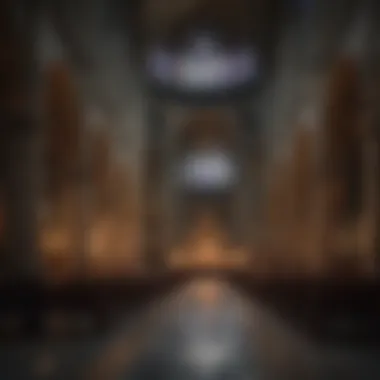
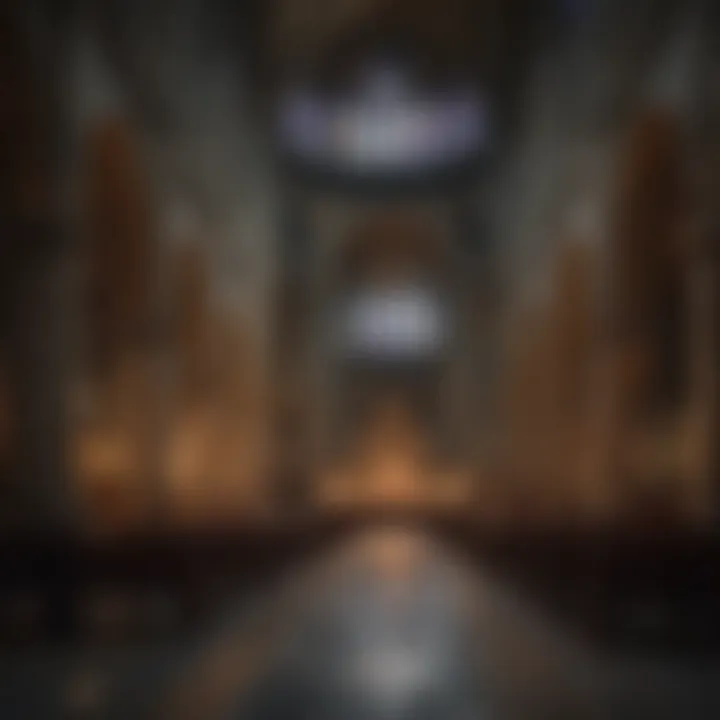
Exploring Montmartre
Montmartre, situated on a hill in the 18th arrondissement, captures the bohemian spirit of Paris. Known for its artistic past, it was once home to famous painters such as Pablo Picasso and Vincent van Gogh. Visitors can stroll through its winding streets and feel the echo of history in every corner. The centerpiece is the Sacré-Cœur Basilica, which offers panoramic views of the city.
Spend time at the Place du Tertre, where street artists showcase their talents. This lively square reflects the creative energy that flourished here. Enjoy a coffee at a local café and watch the world pass by.
The Latin Quarter
The Latin Quarter, located on the left bank of the Seine River, is a historic academic hub. Home to the Sorbonne, the quarter has attracted students and intellectuals for centuries. The narrow streets are lined with bookstores, cafés, and restaurants. Here, the atmosphere is vibrant, with a youthful energy fueled by the presence of students.
Visitors often explore the Jardins du Luxembourg, a beautiful garden ideal for a leisurely stroll. The area also has a rich literary history, giving a sense of the intellectual pursuits that have taken place within its bounds.
Le Marais: A Cultural Hub
Le Marais is known for its diversity and cultural richness. The neighborhood features narrow medieval streets, historic architecture, and numerous art galleries. Le Marais also houses a large LGBTQ+ community and is known for its welcoming atmosphere.
One can visit the Musée Picasso and the Musée Carnavalet to delve into art and history. The blend of unique shops and trendy boutiques make it a shopping paradise. Dining here ranges from traditional bistros to modern eateries, showcasing an array of culinary delights.
Embracing local neighborhoods such as Montmartre, the Latin Quarter, and Le Marais can truly elevate a trip to Paris. Each neighborhood invites deeper exploration, revealing hidden gems and unforgettable experiences.
Art and Culture
Art and culture form the very heart of Paris. This city has been a canvas for artists, writers, and thinkers for centuries. It is not only home to world-renowned museums but also to an evolving artistic community. Immersing oneself in Parisian art and culture leads to a deeper understanding of its history and lifestyle.
The Parisian Art Scene
The Parisian art scene is rich and diverse. It ranges from classic masterpieces housed in the Louvre to contemporary creations in smaller galleries. Renowned artists like Pablo Picasso and Claude Monet have left their mark here, making Paris a pilgrimage site for art lovers.
Visiting places such as the Musée d'Orsay gives an insight into Impressionism and Post-Impressionism. Meanwhile, the Pompidou Center showcases modern and contemporary art, attracting innovative talent.
Local art shows and exhibitions frequently pop up in various neighborhoods. This creates a dynamic atmosphere for discovering new artists. Many galleries in Le Marais and Montmartre host free openings where one can appreciate the latest works without significant expense.
Theatre and Performance Arts
The theatre and performance arts enrich Paris's cultural fabric. From the grand stages of the Opéra Garnier to intimate performances in small theaters, there is something for every taste. Productions range from classic French plays to contemporary experimental theater.
In addition to traditional plays, Paris also boasts vibrant cabaret performances. Venues like the Moulin Rouge and Le Lido offer dazzling shows that combine music, dance, and extravagant costumes. These performances provide a glimpse into the city’s nightlife and artistic flair.
For those interested in a local experience, many smaller theatres present plays in both French and subtitles in English. This makes it more accessible for non-French speakers. Engaging with the theatre allows visitors to connect with Paris on a different level, understanding the city's social and historical narratives.
"Paris isn’t just a city; it’s an ever-evolving art piece, with every street narrating a story."
Shopping Destinations
Shopping in Paris transcends mere retail; it represents an integral part of the city's culture and identity. For many visitors, exploring the shopping scene is a way to connect with the artistic heritage of the city, while uncovering fashion trends and unique souvenirs. The distinct blend of high-end boutiques and charming local markets contributes to a shopping experience that is vibrant and diverse.
High-End Fashion Boutiques
Paris is synonymous with luxury and style, particularly through its high-end fashion boutiques. Brands like Chanel, Dior, and Louis Vuitton have flagship stores along the renowned Avenue des Champs-Élysées and Rue Saint-Honoré. These boutiques offer not just products, but an experience worthy of the fashion capital.
Shopping in high-end boutiques provides insight into the latest fashion trends. These stores display elegant designs and exclusive collections, showcasing the craft of skilled designers. For those with an appreciation for haute couture, visiting these spaces creates a sense of admiration and inspiration. However, it is essential to approach these shopping experiences with awareness of one’s budget, as even small items can come with a hefty price tag.
When visiting, it’s wise to take your time. Engage the staff, who often have deep knowledge of the products and fashion history. They can provide recommendations tailored to your preferences. In addition, many of these boutiques offer personalized services that can enhance your experience, ensuring you feel valued as a customer.
Local Markets and Artisan Shops
In contrast to the luxury boutiques, local markets and artisan shops offer a unique perspective on Parisian culture. Markets such as Marché Bastille and Marché des Enfants Rouges are vibrant spaces filled with fresh produce, handmade goods, and diversified food stalls. Visiting these markets allows you to engage with local vendors and discover traditional French products.
Artisan shops further enrich this shopping experience. Places like Atelier des Lumières and Rue Cler feature items that tell a story—be it handcrafted jewelry, specialty foods, or one-of-a-kind artworks. Supporting local artisans fosters a sense of community and promotes cultural heritage. These shops often reflect the creativity and dedication of their owners, emphasizing quality over quantity.
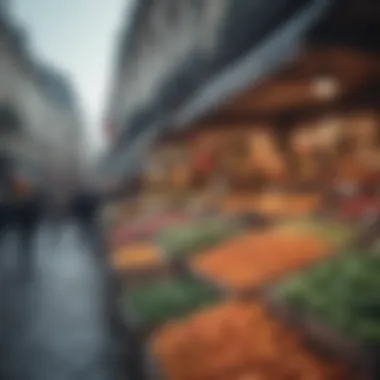
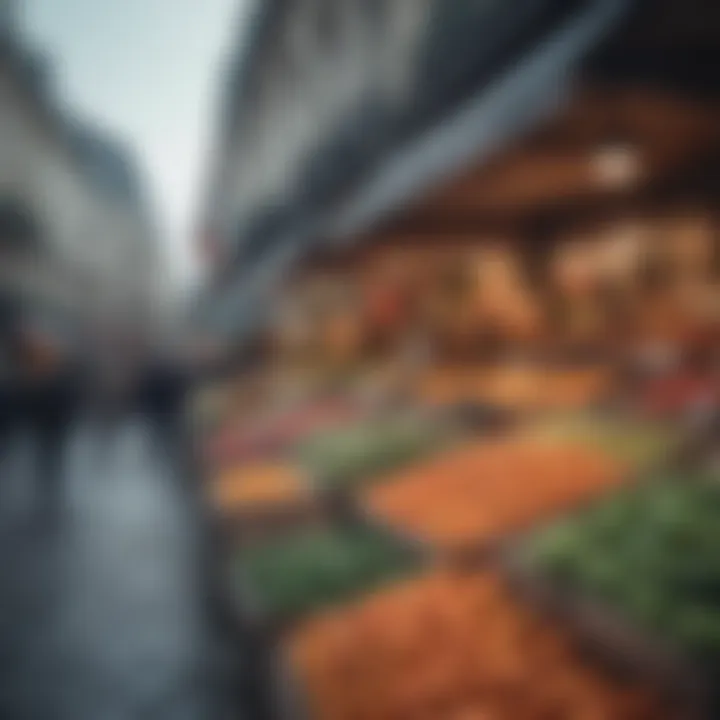
"Paris shopping is about more than just buying; it is about connecting with the culture of the city."
Cultural Etiquette
Understanding the cultural etiquette of Paris is essential for anyone wishing to immerse themselves fully in the city. Parisian culture is rich, and its people value traditions and social niceties. Knowledge of these elements not only enhances your experience but also earns you respect from locals. Engaging with Paris in a culturally sensitive manner can transform an ordinary trip into a memorable and authentic adventure.
Understanding Social Norms
Navigating social norms in Paris involves understanding various aspects of daily interactions. For instance, the practice of greeting people upon entering shops and restaurants is a mark of politeness. A simple "Bonjour" (Hello) can go a long way in establishing a friendly rapport. It is also important to remember that Parisians tend to value space and personal boundaries. Therefore, maintaining a respectable distance during conversations is advisable.
Additionally, dining etiquette is noteworthy. Meals are often leisurely, and it is customary to wait for everyone to be served before starting to eat. Keeping your hands on the table but not resting your elbows is another unspoken rule. These small behaviors showcase a regard for meal culture in France.
"Politeness is the foundation of Parisian social life. A smile and a greeting can open many doors."
Language Considerations
Language can be a barrier, but it is also a bridge to understanding the culture better. While many people in Paris speak English, they appreciate it when visitors attempt to speak French, even if it is just a few phrases. Starting conversations in French, no matter how broken, shows respect and willingness to engage. Phrases like "Merci" (Thank you) or "S'il vous plaît" (Please) can help you connect more authentically.
Moreover, be aware of the preference for formality in language. Using "vous" instead of "tu" is crucial when conversing with someone you do not know well. This subtlety highlights the importance of respect in French interactions.
Finale
In summary, understanding cultural etiquette in Paris enriches your travel experience. Acknowledging social norms and practicing basic language skills will enable deeper engagements with locals. The benefits of such efforts include warmth in interactions and a more profound appreciation for the city’s vibrant culture.
Unique Experiences
Experiencing Paris goes beyond visiting well-known landmarks. The city’s authenticity shines through in its unique experiences. Engaging with lesser-known aspects of Paris can offer travelers fresh perspectives and lasting memories.
Hidden Gems
Paris is filled with hidden gems that can enhance any visit. While tourists flock to big sites like the Eiffel Tower, treasures wait to be discovered in quieter streets and charming neighborhoods.
- Le Musée de la Vie Romantique: Tucked away in the 9th arrondissement, this museum honors the romantic era. Its picturesque garden cafe is perfect for relaxation after exploring.
- Rue Cremieux: This quaint street looks like a scene from a fairy tale. With its colorful houses, it offers a perfect backdrop for photographs.
- La Promenade Plantée: This elevated park was built on a former railway line. This unique setting provides a peaceful way to see the city from above while enjoying nature.
Visiting these locations not only enriches your understanding of Paris but also allows for quieter moments away from crowds.
Seasonal Events and Festivals
Throughout the year, Paris hosts various events that highlight its vibrant culture. Participating in these festivals can provide insight into the local lifestyle.
- Fête de la Musique: Held every June 21st, music fills the streets of Paris. Local musicians perform in public spaces, promoting a sense of community.
- Nuit Blanche: This annual event showcases contemporary art all night long. Museums and galleries open their doors for free, providing a unique opportunity to explore art in unconventional settings.
- Christmas Markets: From late November to December, markets pop up across the city, bringing warmth and charm. Visitors can enjoy seasonal treats and shop for unique gifts.
These seasonal experiences offer deeper connections to the city, making your Parisian visit truly memorable. By engaging with both the hidden gems and participating in unique events, the city reveals itself in fascinating ways.
Ending and Travel Tips
The significance of the Conclusion and Travel Tips section in this guide cannot be overstated. After exploring the vibrant streets, iconic landmarks, and exquisite culinary experiences of Paris, it becomes crucial to synthesize this information into practical advice for travelers. This section is designed to encapsulate the key insights that enhance the travel experience while navigating the complexities of this magnificent city.
In an era where travel can be overwhelming, these essential tips provide clarity and direction. From planning itineraries to understanding local customs, each tip serves to improve not just the efficiency of the visit but also to enrich the overall enjoyment. Visitors can truly appreciate the nuances of Paris when equipped with these insights.
Summary of Essential Insights
To navigate Paris successfully, key insights are worth highlighting:
- Plan Ahead: Research landmarks and their opening hours to maximize your time. Trying to see everything in one day can be exhausting.
- Embrace Public Transport: The Métro is efficient. Knowing routes can save you time.
- Cultural Sensitivity: Learning basic French phrases can enhance interactions with locals and show respect to their culture.
- Culinary Exploration: Do not miss the smaller bistros and bakeries where authentic French cuisine thrives away from the tourist traps.
- Keep an Open Mind: Paris has many hidden gems off the beaten path. Exploring lesser-known areas may lead to delightful surprises.
Final Thoughts on Visiting Paris
Visiting Paris is more than just ticking off landmarks; it is about immersing oneself in the city's culture and story. Each arrondissement has a character that contributes to the mosaic of Paris. Taking the time to engage with local art, food, and community can transform your visit into a deeper experience.
Remember to cherish the small moments: a leisurely café stop, a quiet stroll along the Seine, or simply enjoying the architecture of the buildings surrounding you. These experiences form the essence of Paris.
Incorporating knowledge with empathy creates a richer and more fulfilling experience when exploring this iconic city. By taking these travel tips to heart, travelers can ensure their Parisian adventure is not solely about sightseeing but also about understanding and connecting with this uniquely enchanting city.
"Traveling – it leaves you speechless, then turns you into a storyteller." - Ibn Battuta
To maximize your trip, revisit the tips shared throughout this guide and consider what truly resonates with your travel desires. A thoughtful approach to visiting Paris will undoubtedly yield unforgettable memories and experiences.



